
June 7
1837 Birth: Alois Schicklgruber—Adolf Hitler's father:

The unmarried, 42-year-old Maria Anna Schicklgruber of the village of Strones, a "hotel servant" in the Wooded Quarter, gives birth to Adolf Hitler's father, Alois. The space for 'Father' on the birth form is left blank. Alois will bear the name "Schicklgruber" for the next 40 years. See 1876, below. [For further details, Click here.]
From The Face of the Third Reich by Joachim C. Fest:The indulgence normally accorded to a man's origins is out of place in the case of Adolf Hitler, who made documentary proof of Aryan ancestry a matter of life and death for millions of people but himself possessed no such document. He did not know who his grandfather was. Intensive research into his origins, accounts of which have been distorted by propagandist legends and which are in any case confused and murky, has failed so far to produce a clear picture. National Socialist versions skimmed over the facts and emphasized, for example, that the population of the so-called Waldviertel, from which Hitler came, had been 'tribally German since the Migration of the Peoples', or more generally, that Hitler had 'absorbed the powerful forces of this German granite landscape into his blood through his father'.
[See: Was Adolf Hitler Jewish? and Does the Hitler DNA Test 'Prove' He Was Jewish >?]1842 (Exact Date Unknown): The older brother of Johann Nepomuk Huettler, Johann Georg Hiedler, a 50-year-old "wandering miller," originally from Spital, and variously described as "shiftless" and "no good lazy," marries Maria Anna Schicklgruber. Though much older than Hiedler, she is quite prosperous and in attractively poor health. The couple will never actually live together and, despite usual custom, for reasons never made clear, her husband does not legitimize her child, Alois, then 5 years old.
1861 Alois Schicklgruber: Birthday and new career: The upwardly mobile Alois Schicklgruber has double cause to celebrate. On his birthday, he becomes a Revenue Clerk in the service of the Austro-Hungarian Empire.
1862 Birth: Philipp Lenard:
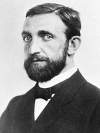
After his study of science in Budapest and Vienna and physics in Berlin and Heidelberg, Lenard obtained a doctorate in Heidelberg in 1886 . . . . With the beginning of the 20s he became one of the most inveterate foes of Einstein's theories of relativity. This rejection, founded on an excessive nationalism in connection with a strong anti-Semitism, became stronger as time passed by and reached its critical stage after the national socialist seizing of power (1933). In Lenard's four-volume work of 1936/37 "Deutsche Physik" (German Physics), written on the basis of classical physics of the 19th century and with the accentuation on experimental physics, the theoretical i.e. "Jewish physics" was almost completely rejected.
[He who laughs last . . . .—Ed.]
1876 Alois Schicklgruber recognized as Alois Hitler:
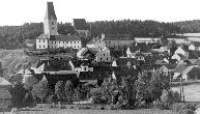
The parish priest of the hamlet of Doellersheim strikes out the name Schicklgruber from the birth registry, inserts the phrase 'within wedlock' to replace 'out of wedlock', and fills in the (until then) empty space for 'Father' with 'Johann Georg Hitler.' The end result of all this shady chicanery (even if Georg really was Alois's father, the 'within wedlock' line is obvious Bavarian bologna) is that Alois Schicklgruber now legally assumes the name Alois Hitler . . . .
What's in a name? Adolf Hitler would describe this name change as the best thing his old man ever did. He once opined to August Kubizek (his best friend) that Schicklgruber was "So uncouth, so boorish, apart from being so clumsy and unpractical." "[Adolf] found 'Hiedler' . . . too soft; but 'Hitler' sounded nice and was easy to remember." It has been said so often that it has become a cliché, but it is obvious that, the faintly comical 'Heil Schicklgruber' would certainly not have had much appeal to the masses. Was Johann Georg Hiedler really Adolf Hitler's grandfather, as Hitler himself believed? It is problematic that Georg never acknowledged the fact. The strongest second choice would be Georg's brother Nepomuk, the man who so readily took in the young Alois. Proof of paternity is lacking for both, however. We will probably never know. [Note: Allied propaganda inferred that Adolf's real name was Schicklgruber. But this was not true. He was born as Adolf Hitler]
1893 Gandhi's first act of civil disobedience:
In an event that would have dramatic repercussions for the people of India, Mohandas K. Gandhi, a young Indian lawyer working in South Africa, refuses to comply with racial segregation rules on a South African train and is forcibly ejected at Pietermaritzburg. 1896 Birth: Douglas Campbell: American World War I flying ace; the first American aviator flying in an American unit to achieve the status of ace.
1905 Scandinavia: After Norway refuses to recognize the Swedish king and declares its independence, Sweden and Norway agree to end their union. The Treaty of Separation will go into effect the following October.
1915 World War I: List Regiment: Gefreiter Adolf Hitler's 16 Reserve Infantry Regiment occupy a position at Fromelles—pictured above in a drawing by Hitler—which is on a level field with water channels, willow trees and willow stalks, in the distance towards the enemy lines lie an insignificant wood with barbed wire entanglements. Under the direction of their defense-minded commander, Lieutenant General Gustav Scanzoni von Lichtenfels, the regiment works ceaselessly day and night to further fortify their position at Fromelles while fighting off repeated assaults by the enemy. [For further details, Click here.] 1916 World War I: List Regiment: Gefreiter Adolf Hitler endures trench warfare in Flanders (Artois) with 3 Company, 16 Reserve Infantry Regiment. [For further details, Click here.] 1917 World War I: Various: Battle of Messines Ridge:
On June 7, 1917, the British 2nd Army, led by Herbert Plumer, scores a crushing victory over the Germans at Messines Ridge in northern France, marking the successful prelude to an Allied offensive designed to break the grinding stalemate on the Western Front in World War I. List Regiment: Gefreiter Adolf Hitler's 16th RIR redeploy east of Douai for a period of rest which will extend until June 24. [For further details, Click here.] 1924 Voelkishness: June 7-8:
An ONT (Order of New Templars) Whitsun meeting is held at Werfenstein castle. It is attended by Johann Walthari Walfl, the new Prior of Werfenstein, Lanz von Liebenfels' two brothers, Herwik and Friedolin, and twelve other members. Celebrations began at midnight with the consecration of fire and water. Under Walfl's leadership, the Austrian ONT has flourished and the membership of some 50-60 brothers frequently contribute money, books, and ceremonial objects for the ornamentation of the priory. Whitsun meetings will also be held in 1925 and 1926. (THP)
1929 Italy & the Vatican: Lateran Treaty:
The Lateran Pacts had three parts: a political treaty (giving the Vatican its own micro-state), a financial convention (giving the Vatican reparations) and a concordat (giving privileges within Italy, for instance by letting the Church influence public education). In return for all of this , Mussolini received Vatican recognition of the Kingdom of Italy — of which he happened to be the dictator. Through the Lateran Pacts, as a contemporary account noted, "Mussolini has achieved a great diplomatic success, perhaps the greatest of his career." Four years later the Vatican would legitimise another dictator, Hitler, also for the price of a legal pact from which it still profits today.
A national holiday was proclaimed to celebrate this propaganda coup. With the Lateran Pacts "the divided allegiance of many Italians between church and state [was] a thing of the past". [6] Henceforth the two powers would present a united front, at least in public. Although Pius XII had moral doubts about Mussolini's attack on Ethiopia, he didn't voice them, even to the dictator. Instead, the Vatican fostered this valuable alliance and on the "Day of Faith" in 1935, the Italian Church actively supported the war effort by helping Mussolini in his nation-wide drive to collect gold wedding rings.
[For further details, Click here. For the full text of the treaty, Click here]
1933 Various:
Quadripartite Pact: In Rome, the four Big Powers: Britain, France, Germany, and Italy sign the Quadripartite Pact of Guarantee proposed by Mussolini: a reinvigoration of the Locarno Pact. All parliaments will ratify this new pact except for France, which rejects it and therefore prevents it from coming into force.
Holocaust: The Central Fund for German Jewry is established by Va'ad Leumi, with Henrietta Szold as chairwoman.
1934 Nazi Germany: Furlough for the Brownshirts from July 1:
The four million brown shirted Nazi storm troopers, the SA (Sturmabteilung), included many members who actually believed in the 'socialism' of National Socialism and also wanted to become a true revolutionary army in place of the regular German Army.
But to the regular Army High Command and its conservative supporters, this potential storm trooper army represented a threat to centuries old German military traditions and the privileges of rank. Adolf Hitler had been promising the generals for years he would restore their former military glory and break the "shackles" of the Treaty of Versailles which limited the Army to 100,000 men and prevented modernization.
For Adolf Hitler, the behavior of the SA was a problem that now threatened his own political survival and the entire future of the Nazi movement.
The anti-capitalist, anti-tradition sentiments often expressed by SA leaders and echoed by the restless masses of storm troopers also caused great concern to big industry leaders who had helped put Hitler in power. Hitler had promised them he would put down the trade union movement and Marxists, which he had done. However, now his own storm troopers with their talk of a 'second revolution' were sounding more and more like Marxists themselves. (The first revolution having been the Nazi seizure of power in early 1933.)
The SA was headed by Ernst Röhm, a battle scarred, aggressive, highly ambitious street brawler who had been with Hitler from the very beginning. Röhm and the SA had been very instrumental in Hitler's rise to power by violently seizing control of the streets and squashing Hitler's political opponents.
However, by early 1934, a year after Hitler came to power, the SA's usefulness as a violent, threatening, revolutionary force had effectively come to an end. Hitler now needed the support of the regular Army generals and the big industry leaders to rebuild Germany after the Great Depression, re-arm the military and ultimately accomplish his long range goal of seizing more living space for the German people.
The average German also feared and disliked the SA Brownshirts with their arrogant, gangster-like behavior, such as extorting money from local shop owners, driving around in fancy news cars showing off, often getting drunk, beating up and even murdering innocent civilians.
At the end of February, 1934, Hitler held a meeting attended by SA and regular Army leaders including Röhm and German Defense Minister General Werner von Blomberg. At this meeting Hitler informed Röhm the SA would not be a military force in Germany but would be limited to certain political functions. In Hitler's presence, Röhm gave in and even signed an agreement with Blomberg.
However, Röhm soon let it be know he had no intention of keeping to the agreement. In April he even boldly held a press conference and proclaimed, "The SA is the National Socialist Revolution!!"
Within the SA at this time was a highly disciplined organization known as the SS (Shutzstaffel) which had been formed in 1925 as Hitler's personal body guard. SS chief Heinrich Himmler along with his second-in-command, Reinhard Heydrich, and Hermann Göring, began plotting against Röhm to prod Hitler into action against his old comrade, hoping to gain from Röhm's downfall.
On June 4, Hitler and Röhm had a five hour private meeting lasting until midnight. A few days later Röhm announced he was taking a 'personal illness' vacation and the whole SA would go on leave for the month of July. He also convened a conference of top SA leaders for June 30 at a resort town near Munich which Hitler promised to attend to sort things out.
1935 Olympic Games: German representatives assure the International Olympic committee that 'Aryans' and 'non-Aryans' will be treated equally during the upcoming Olympic games.
1936 Church and State:
After a Swiss Catholic asked to pray for Hitler's death, Cardinal Faulhaber, in a sermon, declares:
A lunatic abroad has had an attack of madness; does this justify wholesale suspicion of the German Catholics? You all are witnesses for the fact that on all Sundays and holidays at the main service we pray in all churches for the Fuehrer as we have promised in the Concordat. And now one can read in big headlines of the papers at the street corners, "They pray for Hitler's death!" We feel offended on account of this questioning of our loyalty to the state. We will today give an answer, a Christian answer: Catholic men, we will now pray together a paternoster for the life of the Fuehrer. This is our answer."
1938 Baltics: Latvia and Estonia sign non-aggression treaties with Germany.
1939 Royal visit:
King George VI becomes the first British monarch to visit the United States when he and his wife, Elizabeth, cross the Canadian-U.S. border to Niagara Falls, New York. The royal couple subsequently visited New York City and Washington, D.C., where they called for a greater U.S. role in resolving the crisis in Europe. On June 12, they returned to Canada, where they embarked on their voyage home. 1940 World War II: Various:
War in the Air: French fighter planes bomb Berlin.
Norway: The king leaves Tromso aboard the British cruiser Devonshire and is taken to England.
1941 Church and State: Martin Bormann informs the Gauleiters that the influence of the churches will have to be curtailed as much as possible, for National Socialism and Christianity are irreconcilable. (THP)
1942 World War II: Various:
Battle of Midway ends:
Admiral Isoruku Yamamoto still had numerous warships at his command, but without his carriers and aircraft he was forced to abandon his Midway invasion plans and begin a westward retreat. On June 5, a U.S. task force pursued his fleet, but bad weather saved it from further destruction. On June 6, the skies cleared, and U.S. aircraft resumed their assault, sinking a cruiser and damaging several other warships. After the planes returned to their carriers, the Americans broke off from the pursuit. Meanwhile, a Japanese submarine torpedoed and fatally wounded the Yorktown, which was in the process of being salvaged. It finally rolled over and sank at dawn on June 7, bringing an end to the battle.
At the Battle of Midway, Japan lost four carriers, a cruiser, and 292 aircraft, and suffered 2,500 casualties. The U.S. lost the Yorktown, the destroyer USS Hammann, 145 aircraft, and suffered 307 casualties. Japan's losses hobbled its naval might—bringing Japanese and American sea power to approximate parity—and marked the turning point in the Pacific theater of World War II. In August 1942, the great U.S. counteroffensive began at Guadalcanal and did not cease until Japan's surrender three years later. [For further details, Click here]
Aleutian Islands:
On this day in 1942, Japanese soldiers occupy the American islands of Attu and Kiska, in the Aleutian Islands off Alaska, as the Axis power continues to expand its defensive perimeter.
Having been defeated at the battle of Midway—stopped by the United States from even landing on the Midway Islands—the Japanese nevertheless proved successful in their invasion of the Aleutians, which had been American territory since purchased from Russia in 1867. Killing 25 American troops upon landing in Attu, the Japanese proceeded to relocate and intern the inhabitants, as well as those at Kiska. America would finally invade and recapture the Aleutians one year later—killing most of the 2,300 Japanese troops defending it—in three weeks of fighting. [For further details, Click here.] Joseph Goebbels attacks the United States:
[The] American Jewish press has been praising the cowardly General MacArthur as a suitable candidate for the presidency of the United States. Various U.S. cities are already unveiling monuments in his honor. People wear buttons with his picture, and he has received the highest honor England has to offer: an honorable position in Madam Tussaud's famous wax museum. The United Press reports that a body and uniform will be added to his face. This gets us back to schizophrenia. One could say that all this grotesque nonsense is understandable, since in the country of the blind the one-eyed man is king, and that a land without a history of culture must have different ideas of heroism than a nation with two thousand glorious years of history. But the matter has its serious side. One has to ask just how far the Jews can go in debasing and stupefying a people. [For further details, Click here]
1943 Holocaust: Sterilization:
Professor Carl Clauberg, a gynecologist from Königsberg, writes to Himmler that the method which he has been developing in Auschwitz for large-scale sterilization of women is "as good as ready." "I can now see the answer to the question you put to me almost a year ago about how long it would take to sterilize 1000 women in this way. An appropriately trained doctor could most probably sterilize several hundred, although perhaps not 1000, in a day." (THP)
1944 World War II: Various:
Churchill to Stalin:
I am well satisfied with the situation up to noon today, 7th. Only at one American beach has there been serious difficulty, and that has now been cleared up. Twenty-thousand airborne troops are safely landed behind the flanks of the enemies lines, and have made contact in each case with the American and British seaborne forces. We got across with small losses. We had expected to lose about 10,000 men. By tonight we hope to have the best part of a million men ashore, including a considerable quantity of armor (tanks), all landed from special ships or swimming ashore by themselves. In this latter class of tanks there have been a good many casualties, especially on the American front, owing to the waves overturning the swimming tanks. We must now expect heavy counterattacks.
Supreme Commander in the West Fieldmarshal von Rundstedt: Report to Berlin:
Four facts which must be emphasized:
(1) The enemy's complete mastery in the air. (2) The skillful and large-scale employment of enemy parachute and airborne troops, (3) The flexible and well-directed support of the land troops by ships' artillery of strong English naval units ranging from battleship to gunboat. (4) The rehearsal of the enemy invasion units for their task; most precise knowledge of the coast, of its obstacles and defense establishments, swift building up of superiority in numbers and material on the bridgehead after just a few days.
Opposed to this stands the quality of the German soldier, his steadfastness and his unqualified will to fight to the fast with army, navy and air force. All three branches of the service have given their best and will continue to give it. The Enemy Landing Procedure in Broad Outlines:
(a) The enemy had hoped to be able to surprise us. He did not succeed. The beginning of landings from the air on the Western Bay of the Seine and in the Cotentin was on June 6, 1944, at about 0100, under conditions of cloudy, overcast weather with a rather strong wind, intermittent showers and rough sea up to four degrees; at the same time at various sectors of the front strong enemy air formations delivered bombing attacks in the rear area. The enemy thereby wished to bring about an air raid alarm and make us take cover in order to be able to drop his parachute troops with as little risk of observation as possible. In several places parachutists turned out to be dummies (with boxes containing explosives). Purpose: Splitting up of local reserves and withdrawal from the decisive spot, involving loss of time for the defender. Airborne troops in many transport gliders of various sizes cut loose, in accordance with a precisely worked out plan, over the sea or at widely separated points over land, and on the whole they found their designated landing spots accurately. Nevertheless, these landings from the air were no surprise, since our own command and troops had counted on them for weeks and were prepared. Thus the enemy parachute and airborne troops suffered heavy—and in parts even extremely bloody—losses, and were in. most, places annihilated in the course of the battle. They did not succeed in breaking up the coastal defense from the rear. Only in the American bridgehead north of Carentan, by our own attack on three sides, were the enemy airborne troops compressed in the direction of the coastal defense after tough fighting for days, and thus they could link up with their own land forces which had already broken in and in this way were able to get reinforcement and relief.
SS-Panzerdivision Das Reich ordered to immediately proceed to Normandy:
In early June, 1944, Das Reich was stationed in southwest France outside of the city of Montauban. Elements of the division began moving towards Normandy on the night of June 7th, although the armor did not depart the area until the 9th.
The division should have taken approximately three days to reach northern France by rail, but the efforts of French resistance fighters, as well as Allied air superiority, made the move much slower, as the Germans were forced to move overland by road.
[For further details, Click here]
Massacre of Prisoners:
SS-Hitlerjugend
The Canadians first came into contact with the 12th SS in the days following the Normandy landings. On D-Day+1, SS Lieutenant Colonel Karl-Heinz Milius threw his 3rd battalion at the Canadians during the battle for Authie. The North Nova Scotia Regiment and Cameron Highlanders thwarted this German counterattack, stopping the grenadiers in their tracks and bloodying the 12th SS Panzer division for the first time. The twenty-three Canadians captured by the Germans in Authie suffered a horrific fate that foreshadowed future atrocities at the hands of the SS troops. At the main intersection (at the southern end of the village) Canadian soldiers were disarmed, told to remove their helmets, and shot at close range. The young German troops further insulted the Canadian lives they had taken. In one incident, some German soldiers propped up the corpse of a murdered Canadian, placed an old hat on his head, and stuffed a cigarette box into his mouth. In another situation, eight of the lifeless Canadian bodies were unceremoniously dragged onto the street where they were repeatedly mutilated by passing tanks, trucks and armoured vehicles. Appalled French onlookers later testified that SS troops whooped like drunken pirates at their handiwork.
The atrocities continued. Other Canadians were captured and taken to the Abbaye d'Ardenne, the headquarters of the German division where Meyer had watched the battle unfold. In the abbey garden eleven Canadians were interrogated and then killed on 7 June, each Canadian prisoner shaking hands with his comrades before being executed. At noon the next day seven more Canadians were shot at the Abbaye; their murders coincided with the execution of Canadian POWs on the Caen-Fountenay Road. The following evening Canadian prisoners were taken to the 12th SS's 2nd Battalion headquarters to meet their death. On the now tranquil grounds of the Chateau d'Audrieu, Canadian POWs were interrogated and duly executed, first in threes and later in more efficient larger numbers. These large-scale incidents represent 120 of 156 murders committed by the Hitlerjugend during the first ten days of the Normandy Campaign. Other murders took place on a smaller scale at locations like Bretteville d'Orgueuise, Norrey and le Mesnil-Patry. News of the murders began to filter back to the Canadian ranks in Normandy, but there was little immediate proof of the atrocities. [For further details, Click here]
1946 Nuremberg Tribunal: Alfred Jodl responds to tough questioning by the Deputy Chief Prosecutor for the USSR:
JODL [The] Commander-in-Chief of the Navy and the Commander-in-Chief of the Air Force—with due respect to both of these gentlemen—saw the problem as a whole only from the point of view of naval or air strategy, and they saw no danger whatsoever in the Russian Navy or the Russian Air Force. What was taking place on land, of course, was of less interest to them. That explains why the strongest opposition came from the Luftwaffe and the Navy; and only the Army, in this case, was much more inclined to see the tremendous danger with which it was confronted. But in spite of this, every one of us, I myself included, warned the Fuehrer most urgently against this experiment, which should have been undertaken only if there really was no other way out. I will not take it upon myself to judge whether there might perhaps have been a political possibility which was not exhausted; I cannot judge that. 1946 Television resumes in Britain for the first time since the beginning of World War II, as announcer Leslie Mitchell begins the broadcast with: "As I was saying before I was so rudely interrupted."
1948 Czechoslovakia: Resignation of Edvard Benes:
Eduard Benes resigns as president of Czechoslovakia rather than sign a new constitution that would make his nation into a communist state. His resignation removed the last remnant of democratic government in Czechoslovakia and cleared the way for a communist-controlled regime. [For further details, Click here]
1951 Death: Oswald Pohl:
Oswald Pohl was a Nazi official and member of the SS (with a rank of SS-Obergruppenfuehrer), involved in the mass murders of Jews in concentration camps, the so-called Endloesung (Final Solution).
Pohl was born on June 30 1892, in Duisburg-Ruhrort as the son of blacksmith Hermann Otto Emil Pohl and his wife Auguste Pohl (née Seifert); he was the fifth of a total of eight children. After graduating from school in 1912, he became a full-time soldier in the German navy, being trained in Kiel and Wilhelmshaven as well as the Caribbean and south-east Asia. During World War I, he served at the Baltic sea and the coast of Flanders. Pohl also attended a navy school, and became paymaster on April 1, 1918; most of his time in the navy from then on was spent in Kiel. On October 30 the same year, he married.
After the end of the war, Pohl attended courses at a trade school and also began studying law and state theory at the Christian-Albrechts University in Kiel; he dropped out of university soon again, though, and became paymaster for the Freikorps "Brigade Loewenfeld", working in Berlin, Upper Silesia and the Ruhr basin. In 1920, like many others involved in the Luttwitz-Kapp Putsch, he was accepted into the Weimar Republic's new navy, the Reichsmarine. Pohl was transferred to Swinemunde in Poland in 1924.
One year later, in 1925, Pohl became a member of the SA, then finally joined the re-founded NSDAP (the Nazi party) on February 22 1926, as member #30842. He met Heinrich Himmler in 1933 and became his protege. He was appointed chief of the administration department in the staff of the Reichsfuhrer-SS ("Reich leader SS", RFSS) and given the rank of SS-Standartenfuehrer on February 1, 1934, and began to influence the administration of the concentration camps.
His career continued when he was made Verwaltungschef (chief of administration) and Reichskassenverwalter ("Reich treasurer") for the SS on June 1, 1935, then initiated the Inspektion der Konzentrationslager ("inspection of the concentration camps"), an organization to organize and oversee the administration of the concentration camps. He also founded the "Gesellschaft zur Foerderung und Pflege deutscher Kulturdenkmaeler" ("Society for the preservation and fostering of German cultural monuments"), which was primarily dedicated to restoring the Wewelsburg, and old castle that was supposed to be turned into a cultural and scientific headquarters of the SS at Heinrich Himmler's request. The "society" soon became a part of Pohl's SS administration office.
Pohl also left the church in 1935, and, in June 1939, became chief of both the "Hauptamt Verwaltung und Wirtschaft" ("main bureau [for] administration and economy", part of the SS) and the "Hauptamt Haushalt und Bauten" ("main bureau [for] budget and construction", part of the Reich's ministry for the interior). On February 1, 1942, both institutions were combined into the "SS-Wirtschafts-Verwaltungshauptamt" (SS-WVHA, "SS main bureau for economic administration") with Pohl in charge; among other things, the SS-WVHA was in charge of the organization of the concentration camps, deciding on the distribution of detainees to the various camps and the "rental" of detainees for forced labor until 1944.
Pohl was made SS-Obergruppenfuehrer and general of the Waffen-SS on April 20, 1942. On December 12, the same year, after divorcing his wife, he married Eleonore von Bruening, widow of Ernst Ruediger von Bruening, who in turn was the son of one of the founders of the Hoechster Farbwerke, which became part of the IG Farben in 1925.
In 1944, Pohl was put out of charge of the concentration camps, with the Ruestungsministerium (ministry of armament) overtaking; at the same time, the responsibility for construction was also taken away from the SS-WVHA. However, Pohl remained in charge of the administration of the Waffen-SS for the remainder of the war.
After the end of World War II, in 1945, Pohl first hid in Upper Bavaria, then near Bremen; nevertheless, he was captured by British troops on May 27, 1946. He was sentenced to death on November 3, 1947, by an American military tribunal after the Nuremberg trials for crimes against humanity, war crimes and membership in a criminal organization, as well as for mass murders and crimes committed in the concentration camps administered by the SS-WVHA he was in charge of. However, Pohl was not executed right away . . . . Pohl was hanged at Landsberg Prison on June 7, 1951, but he maintained he was innocent to the end, claiming that he was only a 'simple functionary.'
Edited by Levi Bookin (Copy editor) Click to join 3rdReichStudies Disclaimer: This site includes diverse and controversial materials—such as excerpts from the writings of racists and anti-Semites—so that its readers can learn the nature and extent of hate and anti-Semitic discourse. It is our sincere belief that only the informed citizen can prevail over the ignorance of Racialist "thought." Far from approving these writings, this site condemns racism in all of its forms and manifestations.
[For further details, Click here. Worth a look.]
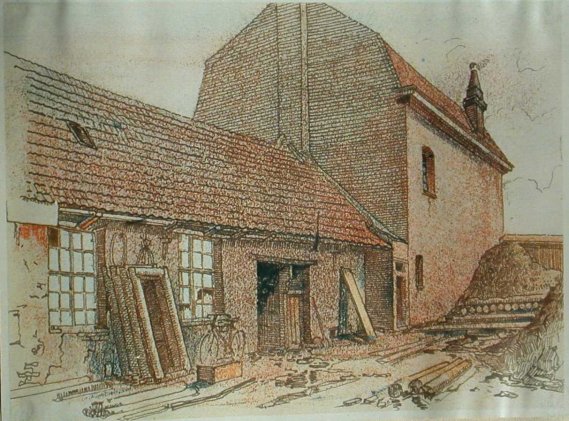
Fromelles Watercolor, 1915, by Hitler
[For further details, Click here]
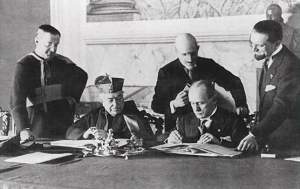
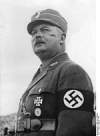
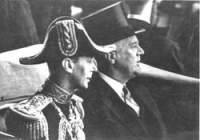
[For further details, Click here]
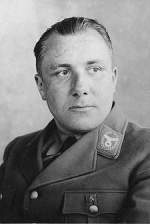

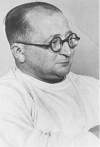
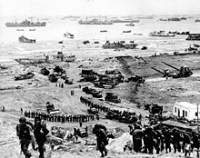
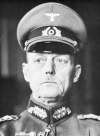


COL. POKROVSKY: Very well. I am satisfied with your reply, and particularly with the fact that you have condescended to define the breaking of this treaty and the attack on the Soviet Union by the word "experiment." I want you to look at the document...
THE PRESIDENT: I think you should not make comments of that sort. You must ask questions and not make comments.
COL. POKROVSKY: My remark, My Lord, is connected with my next question? [For the full text of today's proceedings, Click here.]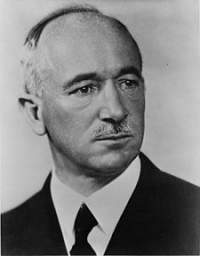
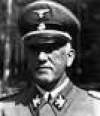
levi.bookin@gmail.com







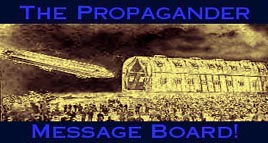


Fair Use Notice: This site may contain copyrighted material the use of which has not always been specifically authorized by the copyright owner. We are making such material available in our efforts to advance understanding of historical, political, human rights, economic, democracy, scientific, environmental, and social justice issues, etc. We believe this constitutes a "fair use" of any such copyrighted material as provided for in section 107 of the US Copyright Law. In accordance with Title 17 U.S.C. Section 107, the material on this site is distributed without profit to those who have expressed a prior interest in receiving the included information for research and educational purposes. If you wish to use copyrighted material from this site for purposes of your own that go beyond 'fair use', you must obtain permission from the copyright owner.
Please Note: The list-owner and moderators of 3rdReichStudies are not responsible for, and do not necessarily approve of, the random ads placed on our pages by our web server. They are, unfortunately, the price one pays for a 'free' website.